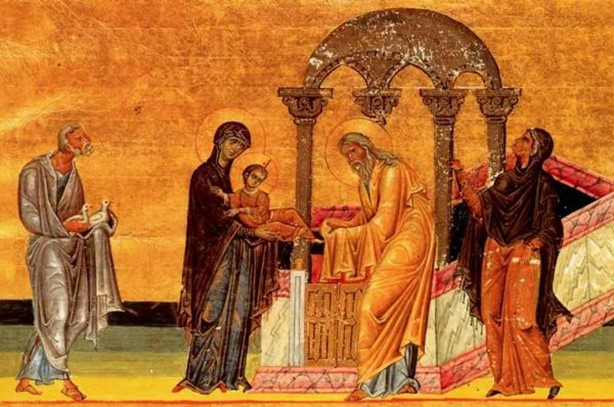Candlemas, the Christian feast of light brought to the world by Christ
Celebrated 40 days after the Nativity, it invariably falls on February 2, the day on which the Presentation of Jesus in the Temple is celebrated.
The custom, which is gradually being lost, would be that on this day, Christians who go to church, to celebrate the Presentation of the baby Jesus in the Temple by Mary and Joseph in Jerusalem, carry torches or candles that will be blessed.
These candles were then brought home and placed, lit, on the edges of the windows.
Candlemas is therefore the Christian celebration of the Presentation of the baby Jesus in the Temple of Jerusalem by Mary. This biblical episode is recorded by Luke in his Gospel.
The presentation of children in the Temple was part of the obligatory actions in the Jewish faith to which Mary, Joseph and of course the baby Jesus belonged. This Hebrew prescription therefore stipulated that every firstborn male was to be consecrated to the Lord. It is a rite of purification. The birth of the child must be redeemed, exchanged for the sacrifice of an animal: two turtledoves or two doves. This text and in particular the sacrifice of animals is controversial by some exegetes; the purification would be that of Mary who became a mother and not that of the child.
Arriving in the Temple, Mary who carries her child Jesus and Joseph are challenged by two prophetic characters: Symeon and Anne.
Symeon would not die until he knew the Messiah. Pushed by the Holy Spirit to the Temple, he sees Jesus, he sees Jesus, takes him in his arms and blesses him. He tells God that now he can leave this world and die. He reveals to Mary and Joseph that Jesus is the light that will enlighten the pagan nations and the peoples of Israel.
Anne, an extremely pious old widowed woman, will praise the child upon seeing him and tell everyone she meets about this scene and the child.
The feast of Candlemas probably has its roots in pagan festivals as is often the case for many festivals that have been replaced by religious celebrations. The Christian Church of Rome has done this on many occasions in order to gradually replace the rites in place with Christian rites.
In antiquity, the month of February was the time of many celebrations:
The Celts celebrated Brigit, goddess of fertility and purification, on February 1. Peasants roamed the fields with torches before sowing to purify the land. Moreover, St. Bridget will be instituted on February 1 by the Catholic Church.
A parallel should also be drawn between Candlemas and the bear festivals that are still celebrated in the Pyrénées-Orientales. It is a question of celebrating the return of vigor and fecundity by the exit of the bear from its wintering. Here again, we can also see that on this day are also celebrated St Ours of Aosta and St Blaise. St Blaise is also associated with the candles that were brought to him when he was in prison for his beliefs.
In ancient Rome, the festivals of the Lupercales were celebrated at the foot of the Palatine Hill by going through the streets with flaming sticks. These feasts were an opportunity to praise Faunus (the Greek Pan) who represented fertility.
The festacandelarum was also celebrated, the light brought back to Earth by the goddess Persephone taken from the underworld by Hades, the god of the underworld. His mother Demeter (goddess of wheat among others) had obtained from him that her daughter return to Earth two-thirds of the year by bringing her light back into our world. It is also relevant to point out that the word itself of February comes from the Latin "februare", verb meaning to purify, we can also compare this word to the term fever, which causes strong sweating and is supposed to purify the body.
Indeed, all these feasts and Candlemas itself all carry these same ideas of purification, renewal and return to the light.
Christian Liebenguth
Vie Montante Belgium




